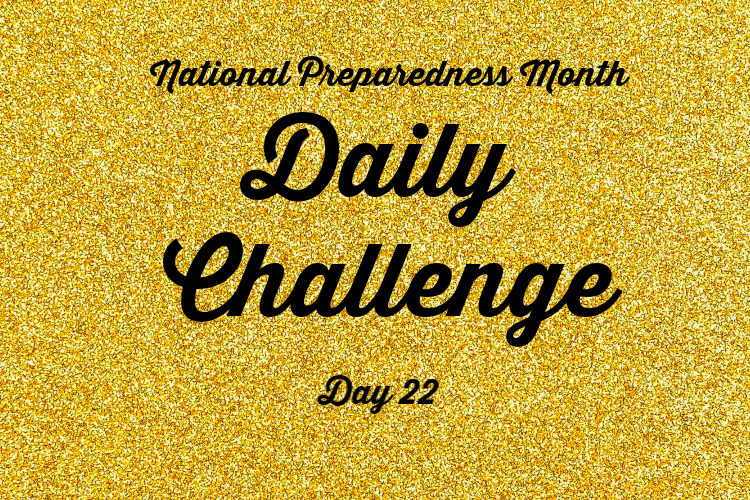If you're new here, you may want to subscribe to my RSS feed. Thanks for visiting!
Author of Be Ready for Anything and Bloom Where You’re Planted online course
If you missed the previous challenges, you can catch up here:
- Day 1
- Day 2
- Day 3
- Day 4
- Day 5
- Day 6
- Day 7
- Day 8
- Day 9
- Day 10
- Day 11
- Day 12
- Day 13
- Day 14
- Day 15
- Day 16
- Day 17
- Day 18
- Day 19
- Day 20
- Day 21
Today’s Challenge
Today’s challenge is a simple one but one you can learn from. (Some of you already have this covered and with so much detail that I learned a lot from your posts on Day 15.)
Today I want you to learn about your native beneficial plants. The great thing about native plants is that they’ll grow without any real input from you. An example of this would be wild blackberries in California. Most things die in the summer in California but wild blackberry bushes thrive to the point they’re practically an invasive plant. This tells me that you could cultivate some wild blackberries on your land without much difficulty at all, but perhaps in a way that you’d actually be able to get to all the berries instead of in an impenetrable bramble where you can only get to the outer layer.
Some ways to learn about your local plants that could be edible or medicinal:
- Go to the biggest greenhouse/garden store in the area and browse. (Although it’s fall, and spring might be a better time to learn this stuff at a greenhouse.)
- Look online for your local plants. Focus on state college websites for this information.
- Check out some regional foraging books from your local library or get some from Amazon. Be sure to get books that are regional rather than general.
Then think about how you might be able to incorporate some of these in your landscape next year if you have a property where you can plant. This is the easiest form of permaculture because you’re just planting what will grow naturally. Then you’ll have a source of food or natural medicine right on your property with very little effort.
If you are in an apartment, this is still a useful exercise because you can take the information and use it for foraging in parks and public lands.
What grows in your area?
What useful plants grow in your area?
Tell me about what grows easily in your vicinity. (Always be careful not to give too much personal information online.) Here’s where to post in the forum.

















4 Responses
I have reserved Rosemary Gladstar’s medicinal herbs :A Beginner’s Guide at my local library. It will probably be available in a couple of days. I am also looking into getting some books on foraging.
Wild lettuce! Got a huge crop. I harvested seeds for storage. It can be used to make a pain killer comparable in potency to morphine and is completely unregulated by the FDA and DEA.
https://www.youtube.com/watch?v=tXxiq6UBiFg
Watcha gonna do when the drug stores close and you REALLY need relief?
I have run short of food before and had to learn what was available. There are lots of wild places around town where foods grow wild. Lots of farms and greenhouses around here, always something growing wild.
Around here there’s Dandelion, wild lettuce, plantain, Canada thistle. Plantain is harder to come by.
There some medicinal stuff like bindweed, but not being a herbalist put me off using anything beyond the most obvious wild eats. Knock on wood but I don’t need the plantain for injury.
Dandelion seems to be almost always around spring to fall.
Wild grass can probably be juiced, maybe elm leaves too, but I haven’t tried. Cattails growing in some nearby ditch, meh. I really would have to be starving to try that.